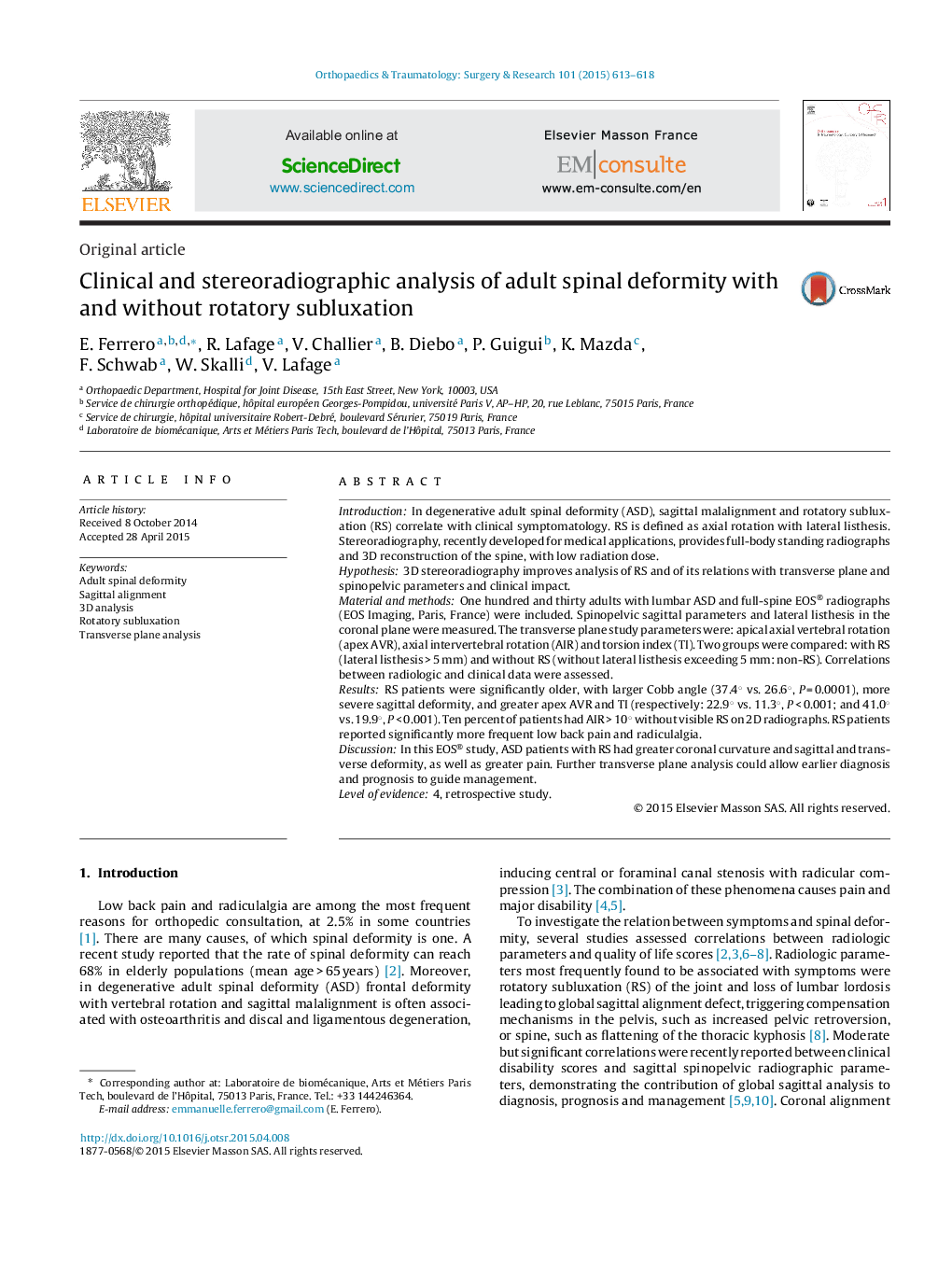| Article ID | Journal | Published Year | Pages | File Type |
|---|---|---|---|---|
| 4081055 | Orthopaedics & Traumatology: Surgery & Research | 2015 | 6 Pages |
IntroductionIn degenerative adult spinal deformity (ASD), sagittal malalignment and rotatory subluxation (RS) correlate with clinical symptomatology. RS is defined as axial rotation with lateral listhesis. Stereoradiography, recently developed for medical applications, provides full-body standing radiographs and 3D reconstruction of the spine, with low radiation dose.Hypothesis3D stereoradiography improves analysis of RS and of its relations with transverse plane and spinopelvic parameters and clinical impact.Material and methodsOne hundred and thirty adults with lumbar ASD and full-spine EOS® radiographs (EOS Imaging, Paris, France) were included. Spinopelvic sagittal parameters and lateral listhesis in the coronal plane were measured. The transverse plane study parameters were: apical axial vertebral rotation (apex AVR), axial intervertebral rotation (AIR) and torsion index (TI). Two groups were compared: with RS (lateral listhesis > 5 mm) and without RS (without lateral listhesis exceeding 5 mm: non-RS). Correlations between radiologic and clinical data were assessed.ResultsRS patients were significantly older, with larger Cobb angle (37.4° vs. 26.6°, P = 0.0001), more severe sagittal deformity, and greater apex AVR and TI (respectively: 22.9° vs. 11.3°, P < 0.001; and 41.0° vs. 19.9°, P < 0.001). Ten percent of patients had AIR > 10° without visible RS on 2D radiographs. RS patients reported significantly more frequent low back pain and radiculalgia.DiscussionIn this EOS® study, ASD patients with RS had greater coronal curvature and sagittal and transverse deformity, as well as greater pain. Further transverse plane analysis could allow earlier diagnosis and prognosis to guide management.Level of evidence4, retrospective study.
